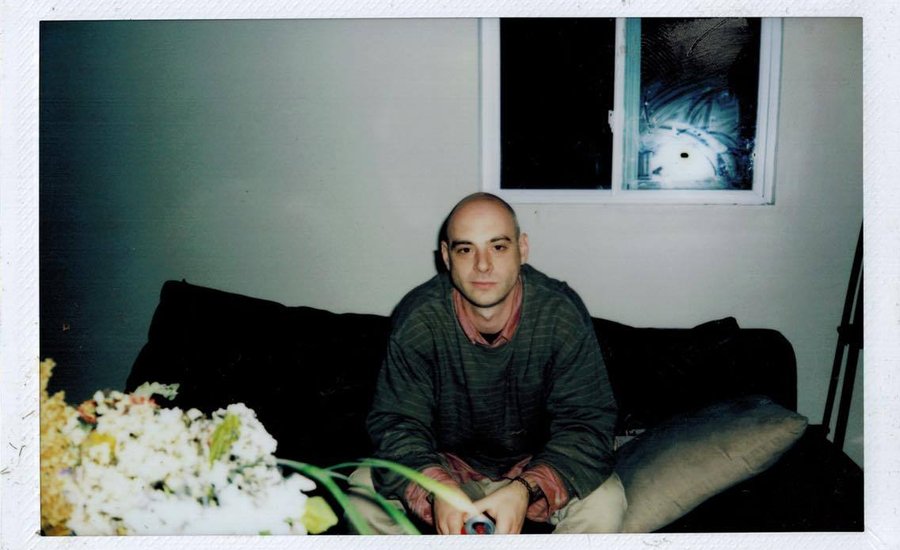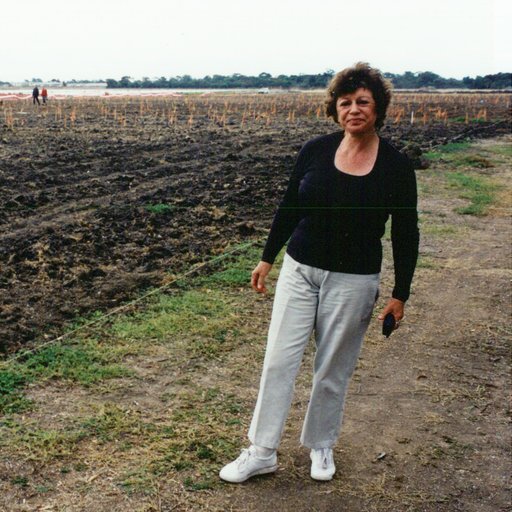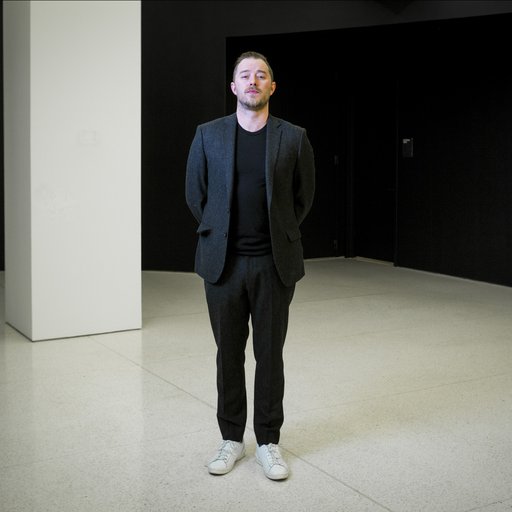Sex Magazine isn’t about sex, but that doesn’t mean that it isn’t sometimes NSFW. Covering mostly underground, cool-kid icons working in art, film, fashion, technology, and design, Sex Magazine has published a surfeit of titillating interviews across its ten issues since 2012. Until very recently, these issues have been internet-only—fitting for a magazine focused on “some of the most influential forces of the post-internet era.” In December of 2016, a condensed print version of the issues was released as a 355-page book—an old-fashioned material manifestation of the lo-fi aesthetics, irreverent attitudes, and anti-elitist perspectives that have come to define the magazine.
Here, Artspace’s Loney Abrams speaks with Sex Magazine founder Asher Penn in his Bushwick apartment and over email about how to start a culture magazine on a low budget, where to get the best scoops, and why web publishing made sense in 2012 but might be too risky in 2017.
Asher Penn: I really liked your interview with Adam Curtis.
Loney Abrams: Thanks!
I think it sparked some real debate. Some of the stuff he said really put some people on the defense. For me, personally, what Curtis said validated some ideas about teamwork that I had already been gravitating towards. The best work that I do involves collaboration.
Why do you think the interview made people defensive?
I just think that it goes against the fierce cult of individualism and celebrity culture that informs the way that art is both taught and made today. This is ultimately a limitation—great works require so much collaboration with actual creative people expressing themselves, as opposed to the Jeff Koons studio model that was popularized in the 2000s, where assistance was 100-percent dedicated to one individual's “vision.” That system is basically outsourcing, and the resulting work illustrates how limited it is in scope.
I think that it may have also made people defensive because Curtis called artists out for not being more political, more activist, more dedicated—without really acknowledging that you have to be pretty privileged to do those things. I can’t blame people for making salable work—not all of us can afford to turn away a stable income. That being said, I agree with just about everything Curtis said, and I think it’s really important to talk to smart, informed people who might know a little bit about the art world, but have absolutely no stake in the art world—people like Adam Curtis. Those are the people who can be truly critical.
That was one of the reasons I stopped making art. When I started working on the magazine it was such a personal relief to stop basing my creative work on the art market. I remember finding it super liberating mentally. Working with so many people, and listening to them, made everything that I did so much better.
Sex Magazine seems like a product of that collaborative mindset.
It’s like an online community. It’s dispersed, but people have connected IRL through it.
Why was it online-only?
Sex Magazine was always meant to be a low overhead project. You could build an amazing site that would last for years for the same cost as printing an issue. That made starting a magazine seemed plausible. I wasn’t paying a printing fee; I wasn’t paying distribution fees. In the beginning I was doing almost all of the blog content myself. There still isn’t much staff other than a few freelancers. And the site still had advertisements!
I remember in the beginning you reached out to me and asked if I wanted to do an online ad. There were stipulations, like the logo had to be black-and-white.
We just wanted it to look good! In 2012 I was really interested in bringing ad culture to online publishing. It showed the cosmology of magazines, culture, your community. I really wanted everything to look good, with a template that could take a ton of different aesthetic approaches and put them in one place and still have it look okay. I mean, I’m sure a lot of magazines do that now.
Do they? Ads are so ugly. Websites are so ugly.
And they're getting worse.
But the Sex Magazine site feels really considered and designed and at the same time, very lo-fi and kind of punk—intentionally cavalier, if that makes sense.
I was trying to transplant the best of print-magazine aesthetics from a bunch of sources and reimagine them for web design in 2012. This was probably the last year before everything went to being for the phone. It was just about making a digital space that was flexible to a ton of different aesthetics without looking like garbage. That function dictated the look more than anything else.
How does one start an online magazine?
You have one really good interview that keeps getting rejected a bunch. I had a really fantastic interview with Danny McDonald that nobody wanted to publish. I had also had some frustrating experiences with publishers in terms of how stories got edited or laid out. At one point I realized that I should just do it myself. I wrote a business plan, a style guide, a mission statement, and did a lot of research about the history of other magazines, other moments in publishing. Around that time I also sold a lot of work to Stefan Simchowitz (my last real art sale) and that was the launching pad for the magazine itself. I just kind of did it.
What made Sex Magazine different from other magazines at the time?
I remember at the time that Vice had a real disconnect in terms of what its print culture was versus what its online presence was. The same went for Purple. Also, the coolest people didn't even have money to buy magazines. I wanted my magazine to be read by the most intelligent, cool people out there and they weren’t reading anything in print—they were on the internet. Starting a magazine on the web was a way get to them somehow.
You had been making artist books before that, right?
I had already been making my own artist books and publishing other people’s books as this company called 100% with Bill Hayden. We did a book with Brendan Fowler; we did a book with Nic Guagnini. We had a pretty funny website. At the time we were trying to bring a bratty attitude and culture to artist books—kind of against the aesthetic of Nieves, which we thought was very well behaved. But I got fed up with artist books.
What was it about artist’s books and print publishing that you wanted to get away from?
It was just so wasteful and gratuitous. Artists and galleries were just printing meaninglessness page after page. Books the size of phone books that would take one second to get bored with. Nobody actually cared. Books that didn’t sell would fill storage spaces. The real art-book publishers were collectors and were making books to ensure the value of their work in an art-historical context—basically publishing for the market and selling it to art-school libraries. I just wanted to get away from the whole thing.
In 2012 you decidedly started a magazine on the web. Now, in 2017, you’ve just published the Sex Magazine book, which is essentially your web magazine, printed. You’ve come full circle.
Totally. But I’m in a different place. I’m really proud of the craftsmanship that went into it. Every page is constructed and typeset—unlike my older artist books, which seem more like automated artworks. It’s not just like I went to my website and pressed print.
It’s interesting because I feel like a lot of the content you had online almost seemed as if it were made for print. Web publishers tend to favor interviews with big names in order to generate the most traffic—which ultimately is the goal for most profitable websites. But so many of your interviews were with people who hadn’t really had much press before—people who were very much underground. That’s risky business for web publishing, though maybe less so for print publishing.
Yes, totally… for a website that wants the most traffic above all else. That was never the main concern of the magazine. The whole point was to see how an artist actually thinks and talks, not some polished bombastic version of them that is commercially viable but not necessarily true to who they are.
The allure with Sex is that as a reader, you’d learn about all of these great people you’d never heard of.
Yeah. That’s the responsibility of good publisher: to pay attention to what’s happening. Culture-focused magazines have a responsibility to introduce people to new generations of talent, new voices. I learned about a lot of really amazing people through magazines that hold those standards, magazines like Index. And I’ve been lucky in that a lot of those people have crossed my path. In college I was roommates with Ryan Trecartin, and was in A Family Finds Entertainment. At the same time we were all going to Fort Thunder and felt like it was one of the most amazing things in the world. The weirdest thing was leaving Providence to realize that a lot of the world actually agreed. We weren’t crazy—there was something really special happening there. I had read a lot about cultural history when I was a teenager. Understanding that those moments can be a part of your lifetime was formative for me.
How do you choose who to interview?
You know this since you’re an artist—artists are the first tier. There are certain people that the community will swear by, and I pay attention to that. I definitely listen to artists, and when they say, “Hey, you should take a look at this,” I take note.
But it’s personal curiosity, too. In my twenties, when I was deep in the art world, I started to get a little bummed out because I felt like the art model in particular was just so limited. I started considering the best-case scenarios: Art fairs? A teaching job? But you’ve got to remember that this was in the 2000s. In the last few years the idea of what art “is” has expanded in such a great way. It’s been a really cool couple of years.
At the time, I became really interested in finding out what other people were doing; I wanted to know what everyone else’s lives were like. Somebody like Brian Gibson, for example, made a really unusual choice to go from being in a rock band in art school to being a video game developer in Providence. That’s a different lifestyle, you know? It’s surprising. A lot of the time I just wanted to find out what other people were deciding to do, what kind of choices they were making—just because I wanted to figure that out, too. One of the things the [Sex Magazine] book does show are different models of creativity, different models of living, different outlooks that one can have.
So, on the heels of the book, what are your plans for this year in terms of the magazine?
Right now, I’m putting together a yearbook, which is going to be all of the interviews that we put on the blog last year. My dream is to make it free. I feel a certain responsibility to make stuff for posterity, and to make stuff that people can have in their lives. At this point in time, the phone and the computer aren’t giving super positive experiences to a lot of people. Offline, there’s a level of anonymity about what you’re reading; you’re not being put in some kind of search algorithm. So right now print feels like a really nice antithesis, a testament to the moment. I want to make reading experiences positive, just as long as they’re also accessible. I don’t want to make some super heavy luxury object with very thick paper. I would never make a magazine that cost 40 dollars—that’s an insane idea to me.
The people in the yearbook who we’ve done these interviews with are really amazing people and they deserve a kind of posterity. I feel that this generation specifically hasn’t had that as much as it deserves. Since we’ve had such an online culture there aren’t that many physical artifacts to show what has been happening over the past couple of years—in comparison to even the early 2000s.
It’s interesting that you say anonymity is a benefit of reading print. Are you referring to the fact that when you’re reading online you’re being tracked?
Now you are! I mean I’m sure you were before, but I think I was just blissfully unaware. I am aware now, and I’m not super stoked about it.



























